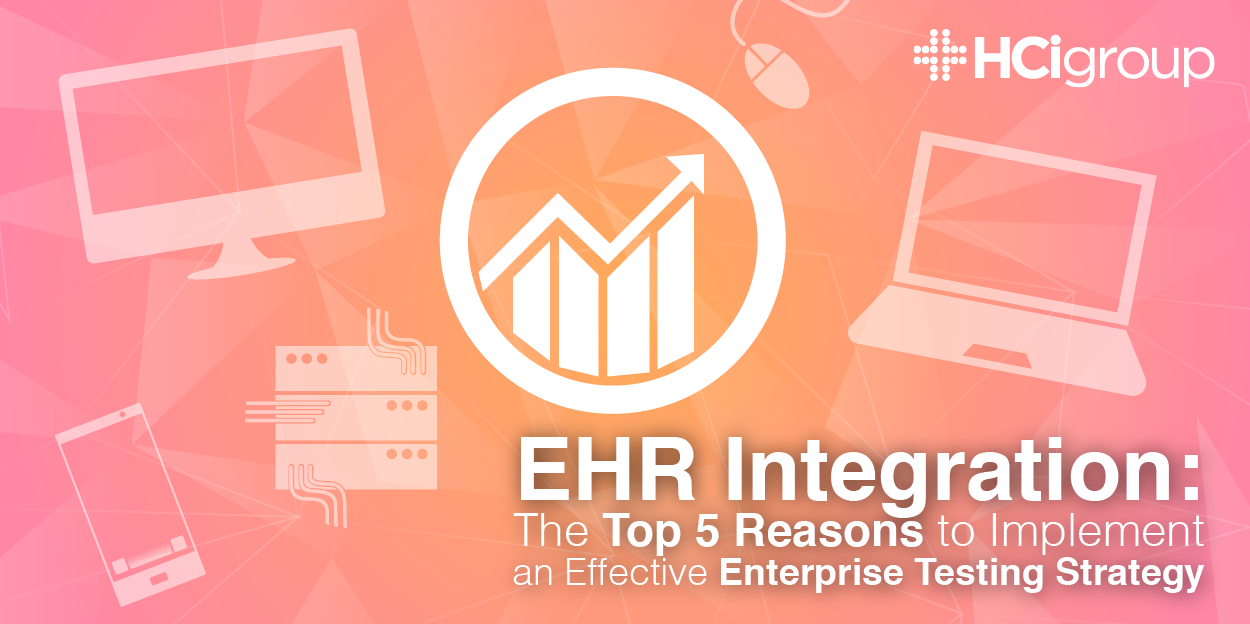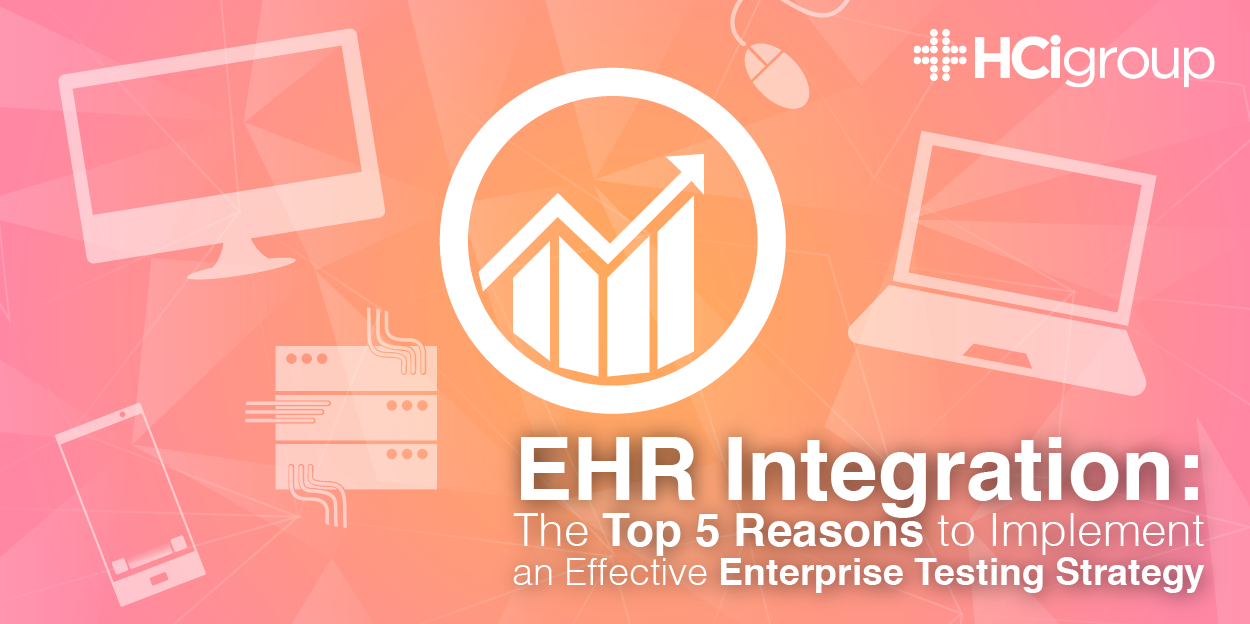EHR Integration: The Top 5 Reasons to Implement an Effective Enterprise Testing Strategy


When it comes to EHR integration, testing is as much about quality as it is quantity.
Doing more tests will not help if you don’t test right.
For example, you could successfully test 3,000 charges before go-live only to find afterward that a type of charge that you didn’t test was not reaching the back-end. You could then lose millions of dollars of revenue due to charges not being billed, as one healthcare organization did.
Not all oversights or mistakes may prove as catastrophic. But your healthcare organization will always risk paying more, collecting less or compromising patient care if you leave testing to teams and individuals.
Without proper integrated testing, you will not get an accurate depiction of the risk for your organization as a whole because left to themselves testers will usually do just enough testing to get by. They also will confine their efforts to their interests and not account for risks elsewhere within the system. That is, a programmer will test for errors while an end-user may assess functionality.
Only an enterprise testing strategy (ETS) that implements procedures and standards organization-wide will provide you with a holistic assessment of risk. And, only with that assessment, can you determine whether to delay go-live to mitigate risk or to proceed as scheduled.
You also can reap benefits such as higher morale and lower redevelopment costs. Here are just the top five reasons to implement an effective enterprise testing strategy for your healthcare organization.
Top 5 Reasons to Implement an Effective Enterprise Testing Strategy
1. Reputation
Establishing an ETS reduces defects experienced by end users, which is vital because new software and digital strategies are being implemented at a more rigorous schedule than ever before. While any flaw or issue found in systems after go-live can negatively impact patient care or revenue and reduce confidence in IT capabilities, an ETS can increase the confidence that end users have in the ability of the IT leadership and staff by helping you to identify and resolve issues prior to the deployment of critical software applications.
Clean and efficient testing with smooth go-lives will only help the reputation
2. End User Satisfaction
An ETS can significantly improve customer satisfaction with flawless, efficient and effective software solutions. More streamlined workflows and processes can create a feeling that the IT leadership understands their needs and are always looking for the best solutions for their customers.
Client is more comfortable moving forward
Client can concentrate on more pressing issues while the strategy is carried out by team
3. Quality of Your Projects
A culture of quality in a healthcare organization is essential for success. IT staff and leadership own the quality of the products they implement. Each line of code or clinical pathway can affect the customer experience. By implementing an ETS, the quality of your product increases dramatically. A healthy strategy requires tests at all levels of the technology to ensure each module, as well as the entire system, works correctly.
Testing is essential - when done correctly, quality output speaks for itself
4. Early Detection of Defects
The early detection of issues can lead to less complex resolutions and rebuild for your developers. Finding these issues prior to implementation can reduce patient safety risks as well as prevent potential revenue loss. An ETS increases the ability of the development team to identify defects prior to build migration into a production environment and eliminates the “silo build” risk.
Catching issues during testing and correcting them helps a go-live run smooth
5. Time and Money Savings
The Systems Sciences Institute at IBM has reported that the cost to fix an error found after product release was four to five times as much as one uncovered during design, and up to 100 times more than one identified in the maintenance phase. Early detection of defects can lead to more efficient use of the developer’s time and substantially lower maintenance costs.
An efficient strategy can decrease the time and money spent on testing
An effective testing strategy can also help shorten the go-live support
Ultimately, your ability to provide quality patient care and operate efficiently after you go-live will depend on how well you tested before you went live. And, you could put your entire healthcare organization at risk if you rely on individuals and teams to decide what to test and how.
We’ve listed only the top five reasons to implement an effective enterprise testing strategy, but there are also additional benefits to be had.
To learn more, click here to download a whitepaper on seven essential elements for an effective enterprise testing strategy.
Addtional EHR Integration & Testing Resources
- Seven Essential Elements for an Effective Enterprise Testing Strategy
- EHR Integration: Top 5 Reasons to Implement a SaaS Hosted Integration Solution
- 10 EHR Testing Questions to Avoid Costly Errors
To learn more about HCI's Integration & Testing services, contact us today!

